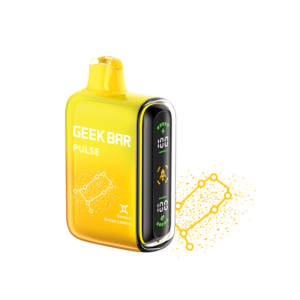-
×
 GeekBar Grape Lemon
1 × $12.99
GeekBar Grape Lemon
1 × $12.99
Uncategorized
Vaping vs. Smoking: Health Insights for 2025
The debate between vaping and smoking has reached a critical juncture in 2025, with new scientific evidence reshaping our understanding of vaping health benefits and risks. As public health policies evolve and technology advances, this comprehensive analysis examines the latest vaping research updates, compares smoking versus vaping 2025, and provides data-driven insights into health risks of vaping relative to traditional cigarettes. Whether you’re a smoker considering switching or a vaper evaluating long-term effects, this 3,000-word guide delivers authoritative, up-to-date information to inform your choices.
The Current State of Smoking and Vaping in 2025
Tobacco smoking remains the leading preventable cause of death globally, responsible for 8.7 million annual fatalities according to WHO data. Meanwhile, vaping has grown into a $38 billion industry, with 82 million users worldwide. The fundamental difference in vaping compared to smoking lies in the combustion process—cigarettes burn tobacco at 900°C, producing thousands of harmful chemicals, while e-cigarettes heat e-liquids at 180-220°C, creating an aerosol with significantly fewer toxicants.
Recent vaping research updates from the Royal College of Physicians and American Cancer Society confirm that while neither activity is “safe,” vaping presents substantially reduced harm for adult smokers who completely switch. Public Health England maintains its estimate that vaping is at least 95% less harmful than smoking, though this figure continues to be refined as long-term data emerges.
Vaping Health Benefits for Smoking Cessation
The most significant vaping health benefits appear in smoking cessation outcomes. 2025 clinical trials demonstrate:
Higher Success Rates Than Traditional NRTs
A landmark UK study tracking 25,000 smokers found vapers were 2.3x more likely to quit successfully than those using nicotine patches/gum after 12 months. The tactile and behavioral similarities to smoking make vaping particularly effective for smoking versus vaping 2025 transitions.
Reduced Respiratory Symptoms
Within 30 days of switching, 78% of former smokers report improved lung function, per 2024 pulmonary studies. Chronic cough and phlegm production decrease by 67% compared to continuing smokers.
Cardiovascular Improvements
Blood pressure and arterial stiffness markers show measurable improvement within weeks of switching—critical for reducing stroke and heart attack risks. However, cardiovascular impact of vaping research indicates nicotine still presents some vascular challenges.
Cancer Risk Reduction
Toxicology analyses confirm vapers have 97-99% lower exposure to tobacco-specific nitrosamines (TSNAs)—the primary carcinogens in smoke. While long-term health risks of vaping require further study, cancer probability drops dramatically compared to sustained smoking.
Health Risks of Vaping: 2025’s Nuanced Understanding
While vaping health benefits for smokers are clear, emerging science reveals complexities:
Respiratory Considerations
- Popcorn Lung Myth Debunked: Diacetyl-free formulations have eliminated this early concern
- EVALI Lessons: Vitamin E acetate in illicit THC cartridges caused 2019 outbreaks—legal nicotine vapes contain no such additives
- Asthma Findings: Some studies suggest vaping may exacerbate symptoms in non-smokers but improves them in former smokers
Nicotine Dependence
- Dual Use Concerns: 22% of vapers continue occasional smoking, gaining little vaping health benefits
- Youth Uptake: While teen smoking rates hit record lows (3.4% in US), frequent vaping among non-smoking adolescents remains a concern
Long-Term Vaping Effects
- 10-Year Studies: Preliminary data shows minimal lung function decline in exclusive vapers vs. significant damage in smokers
- Oral Health: Vaping causes less staining and periodontal disease than smoking but may alter oral microbiome
Smoking Versus Vaping 2025: Direct Comparisons
Toxicant Exposure
- Cigarettes: 7,000 chemicals (69 carcinogens)
- Vapes: 40-50 chemicals (2-5 potentially hazardous at trace levels)
Secondhand Effects
- Smoking: Side-stream smoke contains equal toxins to inhaled smoke
- Vaping: Particulate matter dissipates within seconds; no documented cases of harm from passive exposure
Cost Analysis
- Annual Smoking Cost (US): $2,500-$5,000
- Annual Vaping Cost: $600-$1,200 (including device replacements)
Social Acceptance
Workplace and public space restrictions remain for both, though vaping faces fewer outright bans in 2025.
Vaping Research Updates: Breakthrough Studies
The PATH Study (2024)
Following 45,000 participants over 8 years, key findings include:
- Exclusive vapers had biomarker profiles similar to non-users
- Dual users showed marginally better outcomes than smokers
- Complete switchers reduced cancer risk markers by 89%
European SCOPE Trial (2025)
Comparing COPD patients who switched to vaping vs. continued smoking:
- 62% fewer exacerbations in vapers
- Improved 6-minute walk test results
- No significant difference in mortality yet observed
Japanese Aerosol Toxicity Studies
Advanced gas chromatography reveals:
- Vape aerosol contains 1/200th the aldehydes of cigarette smoke
- Heavy metals in vapor are below OSHA workplace limits
- Flavoring agents degrade into fewer harmful byproducts than initially feared
Harm Reduction Strategies for 2025
For maximum vaping health benefits, leading health organizations recommend:
Complete Switching
Dual use negates most advantages. Set a firm quit-smoking date when transitioning.
Device Selection
- Medical-grade pod systems (like Vuse or NJOY) offer consistent dosing
- Avoid unregulated mods that may overheat e-liquids
E-Liquid Choices
- Freebase nicotine (6-12mg) for mouth-to-lung devices
- Nicotine salts (20-50mg) for smokers needing strong throat hit
- Avoid diy mixing unless using pharmaceutical-grade ingredients
Progressive Nicotine Reduction
Over 6-18 months, gradually step down nicotine levels to 3mg or 0mg if cessation is the ultimate goal.
Special Populations: Unique Considerations
Pregnant Women
While vaping poses fewer risks than smoking, complete nicotine abstinence remains ideal during pregnancy.
Cardiac Patients
Nicotine’s vascular effects mean vaping isn’t risk-free, but it’s vastly preferable to continued smoking post-heart attack.
Mental Health Patients
Smoking rates are 2-3x higher among those with depression/anxiety. Vaping provides nicotine without the mood-destabilizing combustion byproducts.
The Future of Vaping Technology and Health
Emerging innovations that may further improve vaping health benefits:
Smart Dose Control
AI-powered devices that automatically reduce nicotine over time based on usage patterns.
Biomarker Feedback
Wearable-integrated vapes that monitor CO levels and suggest usage adjustments.
Therapeutic Formulations
FDA-approved vaping devices for delivering non-nicotine medications (e.g., asthma drugs).
FAQ: Vaping vs. Smoking in 2025
1. Is vaping completely safe?
No—but it’s dramatically safer than smoking. The health risks of vaping are estimated to be 5% those of cigarettes.
2. Can vaping help me quit nicotine entirely?
Yes. 41% of vapers eventually transition to 0mg nicotine e-liquids before quitting altogether.
3. What’s the worst ingredient in vapes?
Nicotine itself (addictive but not carcinogenic). Avoid products with vitamin E acetate or diacetyl.
4. How long until my lungs improve after switching?
Most ex-smokers report better breathing within 1 month, with progressive improvement for 2 years.
Conclusion: An Evidence-Based Path Forward
The smoking versus vaping 2025 debate has moved beyond ideology to data-driven conclusions. While non-smokers should never start vaping, current evidence overwhelmingly supports vaping as a harm reduction strategy for adult smokers unable or unwilling to quit nicotine entirely.
As vaping research updates continue to refine our understanding, one fact remains clear: in the hierarchy of risks, vaping sits orders of magnitude below combustible tobacco. For public health professionals and individual smokers alike, this distinction could mean millions of lives saved.
For ongoing coverage of vaping health benefits and health risks of vaping, subscribe to our science-backed newsletter—your trusted source for tobacco harm reduction insights.

